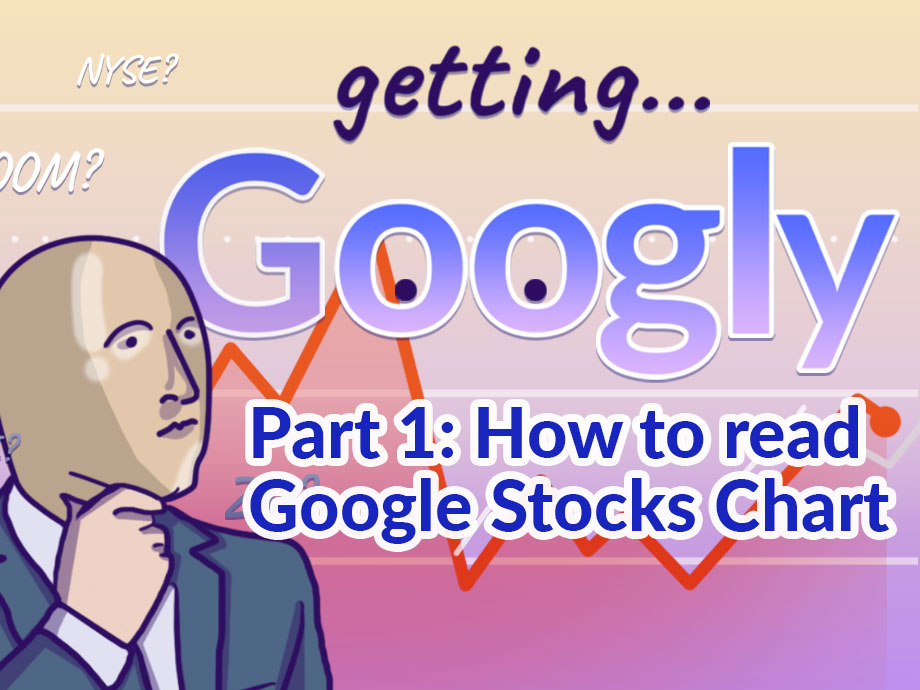Investing | Article
Are Growth Stocks Really Better Than Dividend Stocks?
by Sophia | 16 Jun 2021 | 10 mins read

This article was written in collaboration with Syfe. All views expressed in this article are the independent opinion of The Simple Sum.
If you’re an investor, or even the least bit interested in investing, you’re probably no stranger to the incredible story of Tesla’s growth spurt in 2020. In that year alone, the stock’s price grew by 695%.
To put things into perspective: If you had invested $1,000 in Tesla back in 2010 when it was listed at $17, you’d be sitting on a huge pile of money 10 years later. That is, a whopping $41,510!
But Tesla didn’t turn a profit until 2020. And at its current price, the stock is trading at almost 500 times its earnings. So why do investors still buy the stock? That’s because investors believe in the company’s growth potential.
This form of investing is called growth investing.
And it’s only one investing approach that you can use to build your portfolio. But there are also other investing approaches, like dividend investing, that are viable options for investors.
You might be thinking, “It sounds way more lucrative to invest in Tesla than going for dividend stocks! Why do I even have to choose?”
Well, let’s see how dividend investing squares up against growth investing, and how each approach might appeal to different types of investors.
Dividend stocks: If we win, you win with us
Wouldn’t it be sweet to live off regular investment returns? That’s what dividend stocks are for, to let you cash out sweet dividend payouts at regular intervals – if you remain invested in these companies, of course.
These are usually long-established, stable companies (think of household brand names like Pepsi, Johnson & Johnson, and Target) you’re likely already familiar with, and have been around for decades. Because they’ve been profitable and successful for so long, they give shareholders like us a cut of the profit – meaning that if they win big, then so do we!
Why bother sharing the profit with us at all? It’s to incentivize investors to continue holding onto their stocks. Also, if a company goes through periods of high returns (making a killing in profit), then the dividend yield will be that much higher – which means more money for the rest of us.

But don’t be fooled. Dividend stocks aren’t just strictly companies like Pepsi. Real estate investment trusts (REITs) pay dividends too, from the rental income earned because of the commercial properties they own and manage. In Singapore, our local REITs tend to stand out because of their high dividend yields, including familiar names like CapitaLand Integrated Commercial Trust, Suntec REIT, Mapletree Commercial Trust, and more.
The drawbacks of dividend stocks
t might sound like dividend stocks are the best option for those of us looking to profit off them to fund the retirement lifestyle of our dreams. After all, if these companies have been around for 30 years, then they’re for sure going to be around for 30 years after! Tried and tested, no?
Not exactly. Look at what happened in 2020, for example. No matter how well-established a company is, it will always remain susceptible to market events like recessions and global crises. Heck, market sentiment might suddenly make it such that investors decide to embark on a mass boycott, causing the stock price to nosedive.
What can we do about it? Well, we can’t predict when the next recession will happen, but we can do our part as investors to read up, get familiar with company fundamentals, and learn as much as we can. Let’s not assume that all dividend stocks are always going to be safe, just because.
Also remember that you won’t earn huge capital gains and become a millionaire overnight, or in the short- to mid-term; these companies have been around for so long that their main priority is no longer further expansion or rapid growth
Related
Growth stocks: Your rocket to the moon?
What, then, are growth stocks? If they don’t pay dividends, then how do we earn profit from them
Two words: capital gains.
Growth stocks are basically companies (usually tech companies or have something to do with disruptive tech, like Apple, Tencent, or even Microsoft) that continually channel their profits back to themselves, to grow and expand the business in the short-term for bigger, future returns.
Once these growth stocks rise in value after a couple of years (or longer – just look at Tesla’s ten-year journey), we get to cash in on the profit and sell them off. Easy peasy… as long as we bet on the right horse, of course.
The drawbacks of growth stocks
So, with names like Tesla and Tencent on the rise, you might think that growth stocks are exciting, being much more profitable than the slow-moving dividend stock, and that there are many lucrative growth stocks out there to park your money in.
But that’s not necessarily true – because not every company is going to turn out like Tesla, and no one can guarantee that it will.
Rapid growth and expansion efforts do look exciting and might point to something ground-breaking happening behind the scenes. We might even think that it’s an indicator of higher returns in the future once the company’s product launches.
But that’s only one of many possibilities. Growth stocks are highly volatile, meaning that the price might drop at any moment. It might be that their promising venture turns out to be nothing but a wild goose chase, or they’re ousted by better, leaner competition. Yes, we’ll win big if we bet on the right horse, but how sure are you that the horse you’re betting on is the right one, at the end of the day?
That’s why it’s important to invest as much time and effort as you did with your money into doing research, to figure out if the company’s growth trajectory will continue to hold until you get to the moon.
If the idea of research and running calculations is headache-inducing, don’t worry! A much simpler option would be to invest in a ready-made portfolio of growth stocks to sidestep the hassle completely and make investing a much smoother journey for you.
Related
So, which one should I choose? Dividend stocks or growth stocks?
There’s no right answer; dividend stocks don’t necessarily trump growth stocks, or the other way round. This will have to depend primarily on your financial goals and your personal situation or circumstances.
For example, if you’re planning to fund mid-term goals like buying a house soon, then dividend stocks might be a suitable choice. That way, when dividends come rolling in, you can always reinvest your earnings and let compound interest work its magic on your wealth. By doing this, you can also grow your money at a faster rate to beat inflation.
Say you’re setting aside some money for your home down payment in 5 years. To help that portion of your cash compound, you can invest it in a diversified portfolio of REITs (especially those that hold the largest REITs in Singapore, since they have the best dividend yields) that pay a regular dividend, like Syfe REIT+.
Of course, you may also have long-term goals such as retirement. And while you can still invest in dividend stocks for these long-term goals, investing in growth stocks allows your wealth to grow exponentially since you have a much longer time horizon. (That means you might get to retirement sooner – if all goes well, that is.)
By this point you might be thinking, “All of this sounds great, but there are too many options to choose from!”
It’s true. There are plenty of equity portfolios out there, with many offering you access to tech company stocks through ETFs, featuring exciting players like Tesla and Tencent. Who wouldn’t want those names in their portfolio?
But on the other hand, you might want a reliable, steady income stream from dividends. How do you decide?
The deciding factor might be your risk appetite – that is, how much risk you’re willing to stomach in the name of higher earnings in the future. Another factor might be your investment horizon: how much time you have left to invest before you eventually retire and kick back, once and for all.
Here’s a third option: having the best of both worlds
But under most circumstances, the general rule of thumb for investors like us is to always diversify – that means, in this case, buying into both dividend and growth stocks and making them a part of our portfolios.

Your portfolio allocation could very well comprise 50% dividend stocks and 50% growth stocks as per the Barbell Portfolio strategy. Of course, this won’t be set in stone forever. Depending on how you progress in your investing journey, you might adjust your allocations – especially if your financial situation changes, or your goals change.
For example, as a 25-year-old investor, you might have a high-risk appetite, meaning you’ll focus more on growth stocks in your portfolio as opposed to dividend stocks. But as you near retirement age, you might want to take a more conservative approach, and may feature more dividend stocks in your portfolio.
All of this might sound complicated and prove to be a hassle (especially the research that will go into growth investing), which is why engaging a robo-advisor to help manage your portfolio may be the way to go – especially if you’re a beginner investor looking for a low-effort approach to investing.
At the end of the day, whether you’re gunning for dividend stocks or growth stocks, it’s important to understand the pros and cons of each option – and possibly consider the benefits of diversifying your portfolio too.
You know the age-old investing adage: don’t put all your eggs in one basket. Do your homework, know what you’re investing into, and most importantly, allow your financial situation and goals to guide your decisions.
A message from our sponsor:
If you’re keen to invest in both dividend and growth stocks with minimal effort, check out Syfe REIT+ and Syfe Equity100.
You’ll get to earn passive income through dividends with Syfe REIT+, a portfolio that holds 20 of Singapore’s largest REITs such as Ascendas REIT, CapitaLand Integrated Commercial Trust, Mapletree Commercial Trust, and more. In 2020, the reported dividend yield for REIT+ was 4.5%.
As for growth stocks, look to Syfe Equity100. Beyond US tech stocks like Apple and Tesla, the portfolio also holds significant allocation to the Chinese market, carrying fast-growing names in tech and internet stocks like Alibaba, Meituan, JD.com, and more.
Interested in opening a Syfe account? Sign up with the promo code SIMPLESUM to enjoy zero management fees on your first $30,000 investment for 6 months. There’s no minimum investment amount and no lock-in period, so you can withdraw anytime without any fees.



















